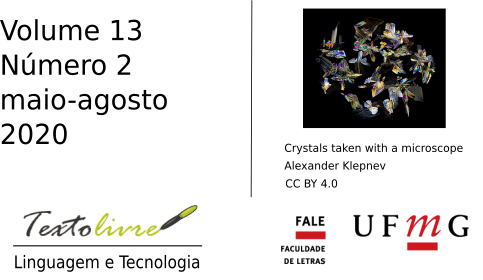Teaching exponential functions through robotics gears
DOI:
https://doi.org/10.35699/1983-3652.2020.24890Keywords:
Gears, Exponential function, LEGO®, Didactic sequence, Educational roboticsAbstract
The central theme of this work is the exponential function and the exponential type through interactions between gears of the LEGO® Mindstorms NXT Kit. For this, we used the construction of a cart with parts from the kit, composed of a 4-speed gearbox, which works under an exponential rate of change. The motivation of this work was to discover if it would be possible or not to abstract this function, from interactions between gears that, in the great majority, are only associated with the proportionality issues and, consequently, with linear functions. But, with analyzes and studies made on materials already obtained, both on interactions between gears and on gear changes made of LEGO® pieces, we could carry out the construction of the proposed gear. We use gears reductions, which, in sequence, form a geometric progression, which, in turn, was associated with the exponential type function. Thus, this exchange is used as an object of study of a didactic sequence and content, both with regard to its construction and its functioning. And as a result of this work, first it is possible to glimpse the great mathematical collection existing in the interactions between gears, which, when associated with Educational Robotics, allows us to fully work on the integral development of students, and second, a didactic sequence for teaching exponential function, which starts from the concrete construction of something, for mathematical abstraction.
Downloads
References
BRASIL. Base Nacional Comum Curricular: Ensino Médio. 2017. Disponível em: http://portal.mec.gov.br/conselho-nacional-de-educacao/base-nacional-comum-curricular-bncc-etapa-ensino-medio. Acesso em: 02 out. 2019.
BENITTI, F. B. V. et al. Experimentação com robótica educativa no ensino médio: ambiente, atividades e resultados. In: Anais do Workshop de Informática na Escola. Blumenau: Departamento de Sistemas e Computação Universidade Regional de Blumenau, 2009. Disponível em: https://www.br-ie.org/pub/index.php/wie/article/view/2166. Acessado em: 22 out. 2018.
LEGO GROUP. Linha cronológica da origem e evolução da empresa. 2010. Disponível em: https://www.lego.com/pt-br/aboutus/lego-group/thelegohistory. Acesso em: 01 nov. 2019.
LIMA, E. L. Números e Funções Reais. 1. Ed. Coleção PROFMAT SBM. Rio de Janeiro-RJ. 2013.
PAPERT, S. Constructionism versus instructionism. 1980. Disponível em: http://www.papert.org/articles/const_inst/const_inst1.html. Acesso em: 1 jul. 2020.
PAPERT, S. LOGO: Computadores e Educação. Trad. José Armando Valente, Beatriz Bitelman, Afira Vianna Ripper. São Paulo: Editora Brasiliense, 1985.
PIAGET, J. A Construção do Real na Criança. Rio de Janeiro: Zahar, 1975.
PIAGET, J. Psicologia e epistemologia: Por uma teoria do conhecimento (A. Cretella, Trad.). Rio de Janeiro: Forense Universitária. (Trabalho original publicado em 1957), 1978.
PIRES DA COSTA, C. A abstração da função exponencial de interações entre engrenagens LEGO®. 2020. 196f. Dissertação (mestrado em matemática), Universidade Federal de Goiás, Regional Catalão, Departamento de Matemática, 2020.
SILVA, A. A. O Ensino de Funções Lineares: uma abordagem Construtivista/Construcionista por meio do Kit LEGO® Mindstorms. 2014. 61 f. Dissertação (mestrado em matemática), Universidade Federal de Goiás, Regional Catalão, Departamento de Matemática, 2014.
ZABALA, A. A prática educativa: como ensinar. Trad. Ernãni E da F. Rosa. Porto Alegre: Artmed, 1998.
Downloads
Published
How to Cite
Issue
Section
License

This work is licensed under a Creative Commons Attribution 4.0 International License.
This is an open access article that allows unrestricted use, distribution and reproduction in any medium as long as the original article is properly cited.











